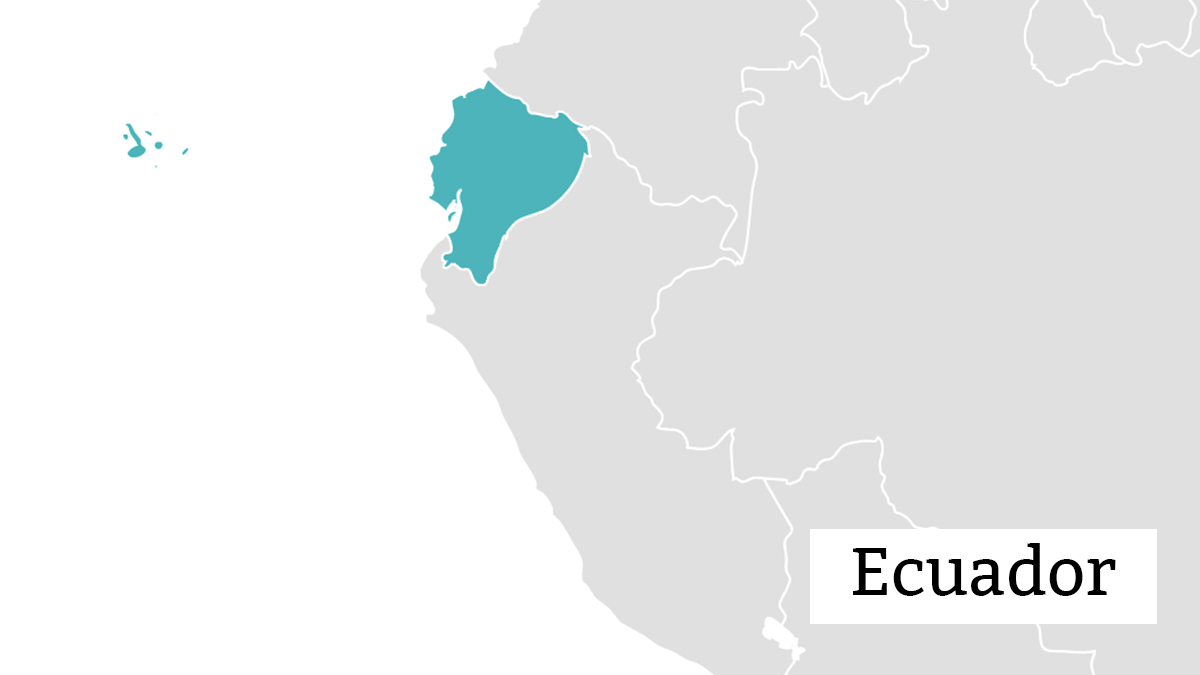
The 20th Constitution of Ecuador, adopted in 2008, refers to the telecommunications sector — which was liberalised in 2002 — as a public service that must be provided by the government. This responsibility involves guaranteeing that public services provision fulfil a variety of principles around availability and reliability of telecommunications. It specifically states that the government is responsible for regulating the sector and for setting price caps on public services.
In subsequent years, the government implemented additional regulatory efforts aimed at providing equal access to ICTs and telecommunications. In 2009, the government created the Ministry of Telecommunications and Information Society (MINTEL), a body responsible for developing telecommunications policy and promoting the widespread adoption of ICTs. Seven years later, in 2015, the government enacted the Organic Telecommunications Law (LOT), which created the Agency of Regulation and Control of Telecommunications (ARCOTEL) with the aim of making the regulatory framework more simple and efficient. This new agency allowed the government to entrust the administration, regulation, and control of the telecommunications sector to a single entity.
These actions have had some positive results for Ecuador — the percentage of individuals using the internet increased from 18.8% in 2008 to 57.3% in 2017, while mobile broadband penetration has also increased from 20% in 2014 to 70% in 2017. However, the government has also recognised the need for significant improvements in affordability.
In 2017, there were approximately one million Ecuadorian families living below the extreme poverty line. While at least 35% of these families owned at least one mobile phone, they struggled to connect to mobile broadband services due to the cost to connect. For this sector of the population, 1GB of data could account for as much as 21.9% of their monthly income. Nationwide, the cost of 1GB of mobile broadband data represents around 6.1% of average monthly income.
Taking this issue into account, the government formulated its Public Policies of the Telecommunications Sector and the Information Society 2017-2021, which mandates the government to undertake projects aimed at facilitating access to telecommunication services for vulnerable groups. Consequently, in recent years MINTEL and ARCOTEL have been making significant efforts to introduce social or preferential tariffs for telecommunication services for vulnerable groups or those with low purchasing power.
In light of the high costs incurred by low-income people to access mobile voice and data services in Ecuador, ARCOTEL enacted the Resolution ARCOTEL-2017-1286, which allowed the government to implement the Social Tariffs Project (tarifas preferenciales) from August 2018. A social tariff connected the country’s social welfare system with operators to provide lower-cost data services for those earning the lowest incomes. This project brought together the Ministry of Telecommunications and the Ministry of Economic and Social Inclusion, as well as the executive directors of the telecommunications authority and the Public Data Register, and was developed as one of the main governmental strategies of the 2018 White Paper of Information Society, which proposes actions to reduce the social and digital gap and to increase ICT access among vulnerable groups.
The Social Tariffs Project supports greater adoption of prepaid mobile voice and data services by significantly reducing their cost for the approximately 900,000 beneficiaries of the Human Development Grant (HDG) conditional cash transfer programme. By lowering the average rates per minute from US$0.14 to US$0.04, and megabyte from US$0.10 to US$0.01 (for up to US$3), Arcotel enabled this segment of the population to save up to 70% per minute and 89% per megabyte monthly. As a result, beneficiaries of the programme will be able to make three times the number of calls and will have access to nine times the amount of internet data for the same price as before. With these measures, the government and its partners in the private sector intend to democratise the use of telecommunication services, reduce the digital gap, and stimulate internet access and use in Ecuador.
The implementation of this policy has involved close coordination between the authority and the country’s three main operators — Claro, Movistar/Tuenti, and CNT. The operators have established mechanisms to apply for the reduced tariffs (call centres, service desks, and SMS services), as well as the prepaid mobile voice and data packages that comply with the government requirements. The government has also granted operators access to SINARDAP — the national system of public data records — to verify the identities of those applying for reduced rates. Once their identity is verified, applicants are entitled to access the benefit.
The introduction of social tariffs has transformed access to the internet into a more affordable service for HDG beneficiaries. Without this support, a user would have to pay a regular tariff that could represent up to 24% of their HDG allowance, whereas with the social tariff, the cost represents just 5.4%.
When the social tariffs were implemented in 2018, 375,000 HDG beneficiaries who already owned an active line with Claro, Movistar/Tuenti, or CNT, were offered immediate access to the reduced rates. According to ARCOTEL, another 644,000 HGD beneficiaries were potential subscribers. The total number of beneficiaries is expected to keep growing as more people are being gradually added to the HDG beneficiaries list.
The social tariffs have helped to empower this sector of the population through the use of technology, and have also brought other benefits to Ecuador. This initiative promotes market competition, with approximately 644,000 prospective new users, which will not only make tariffs more affordable for low-income users, but will also increase their collective buying power by expanding the number of users. It also has the potential to increase both the revenue of the telecommunications sector and mobile broadband penetration across Ecuador.
